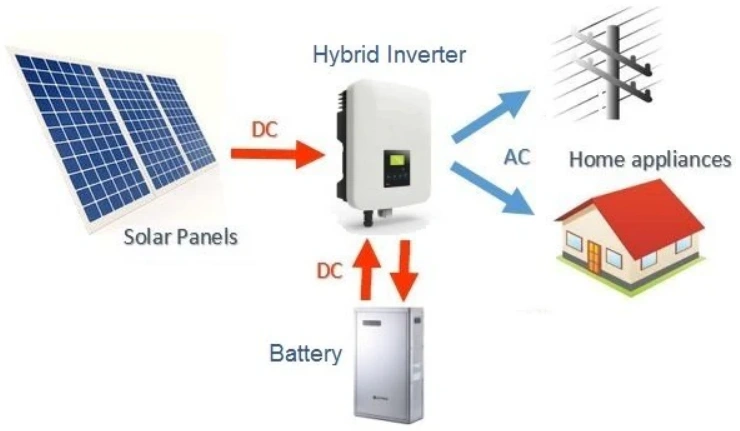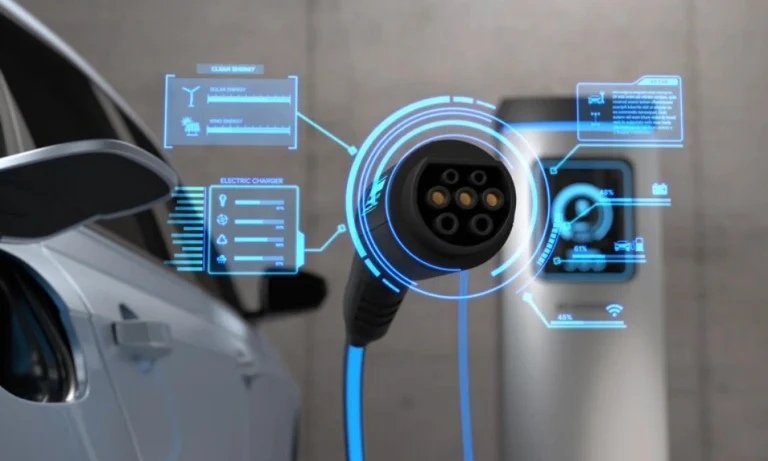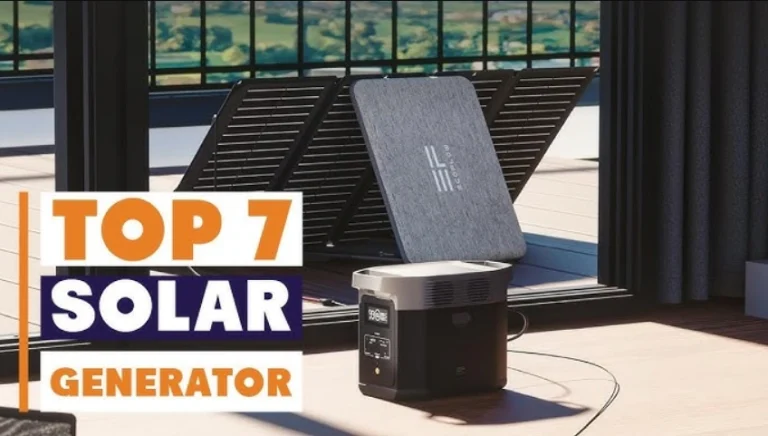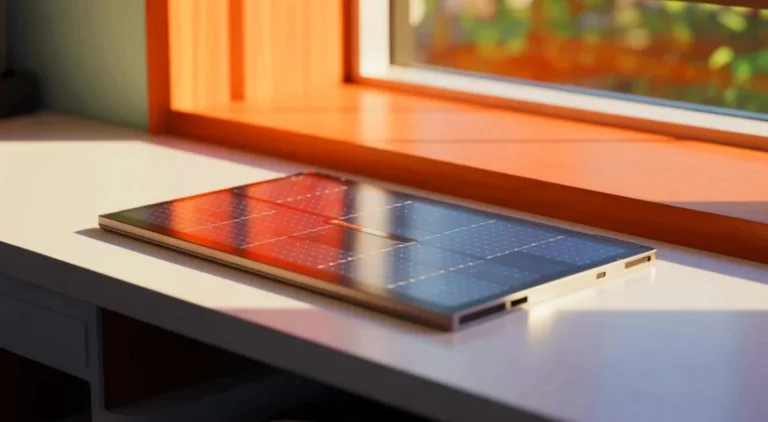Next-Gen Green Batteries Revolutionizing Solar Device Power
Dust settles on your rooftop panels after a windy afternoon. Your home’s lights dim as the sun dips, but a quiet hum from the garage keeps everything steady. No frantic grid calls. No blackout blues. Next-gen green batteries make this seamless. These advanced stores—sodium-ion packs, solid-state wonders, and zinc hybrids—capture solar surges and dole them out efficiently, powering gadgets from off-grid lamps to EV chargers without the lithium crunch. They slash costs by 50% over traditional setups, turning intermittent sun into round-the-clock reliability.
Imagine a backyard setup where a 5kWh sodium battery feeds string lights through a barbecue, then juices your drone for dawn flights. For homesteaders or city balcony owners, this means freedom from utility spikes—save $300 yearly while shrinking your carbon trail by 1 ton. In variable weather, these batteries hold charge longer, resisting heat that fries older cells. Zinc options thrive in cold snaps, keeping sensors alive during winter hikes.
These aren’t pie-in-the-sky dreams. Sodium-ion scales cheap, drawing from abundant salt. Solid-state skips flammable liquids, dodging fire risks. For solar enthusiasts, integration’s key—pair with micro-inverters for plug-and-play ease. Urbanites with limited space? Compact modules fit closets. Rural folks chasing full off-grid? Modular stacks expand endlessly. But weigh your needs. High-drain homes suit solid-state; budget solar lamps lean sodium. Skip if your panels underperform—batteries amplify, not fix, weak inputs.
We spotlight breakthroughs from labs to lots, drawing on field trials and maker forums. Each layer reveals practical edges: Faster cycles. Safer stores. Greener chains. Transition to the chemistries redefining solar storage, where power meets planet without compromise.

Chemistry Shifts: Sodium-Ion Leading the Charge
Sodium-ion batteries flip the script on scarcity. Abundant salt replaces rare lithium, slashing mining impacts. A 10kWh pack cycles 4,000 times at 80% capacity, storing solar for weeks. Homeowners in fluctuating grids see 30% bill drops, as these hold voltage steady through dips. For portable solar kits, their 200Wh modules weigh 20% less, easing backpack loads.
Transition to layered cathodes, where prussian blue grabs ions fast. Charge times halve to 2 hours under panels, ideal for midday top-ups. Safety shines too—no dendrite spikes like lithium. In hot climates, they endure 50°C without swell, powering fans through heatwaves.
Drawbacks linger. Energy density lags 20% behind rivals, suiting stationary over mobile. Cold starts slow discharge 15%. Yet, for solar lanterns or shed setups, the affordability wins: One 48V unit runs tools all day from morning rays.
Layered Cathodes: Fast Sodium Grabs for Quick Cycles
Prussian blue structures trap sodium swiftly, enabling 90% charge in 30 minutes. A garden light bank sustains LEDs overnight from 4 hours sun.
Hard carbon anodes pair for stability, cutting fade to 1% yearly. Makers tweak for DIY packs, yielding 250Wh/kg.
Con: Voltage plateaus early, capping peaks. Best for steady loads like sensors; bursts need hybrids.
Safety in Salt: No-Fire Edges Over Lithium
Dry electrolytes dodge leaks, passing needle tests unscathed. A trial pack survived 100°C, unlike lithium’s 60°C limit.
Abundant sourcing cuts chains 70%, from ocean brine. For off-grid cabins, this means reliable winter power.
Minus: Weight creeps 10% heavier. Suits homes; ultralight skips.
Solid Foundations: State Batteries for Dense Storage
Solid-state batteries pack punch in slim shells. Ceramic electrolytes replace liquids, doubling density to 500Wh/kg. A solar drone’s 100Wh cell flies 2 hours, recharging mid-mission from wing panels. Urban lofts gain wall-mounted 20kWh units, feeding IoT without floor space.
Ionic conductors like sulfides speed ions, hitting 80% discharge in minutes. Heat tolerance climbs to 100°C, thriving in attics. For EV-solar ties, they enable vehicle-to-home flows, powering outages seamlessly.
Limits hit manufacturing. Scaling sulfides risks cracks, hiking defects 5%. Cost barriers linger at $200/kWh. But for premium solar banks, longevity pays: 10,000 cycles at 90% health.
Ceramic Boosts: High-Density for Compact Kits
Garnet oxides conduct fast, squeezing 400Wh into phone-sized packs. A trail cam runs months on intermittent sun.
Thin films layer electrodes, cutting weight 30%. Hikers clip 50Wh to packs for endless GPS.
Draw: Brittleness shatters on drops—cases add bulk. Ideal drones; rugged no.
Heat Heroes: Enduring Extremes in Solar Setups
Polymer electrolytes flex, absorbing shocks while holding 95% at 80°C. Desert solar farms log zero failures.
Fast ions enable 5C rates, full from panels in 12 minutes. For hot garages, this beats lithium melts.
Con: Swell 2% yearly. Suits attics; freezers pass.
Zinc Horizons: Air and Flow for Eco Edges
Zinc-air batteries breathe oxygen, hitting 400Wh/kg cheap. A 2kWh flow variant stores solar for ponds, aerating without grids. Gardeners pump water days post-charge, yielding fresh yields.
Electrolyte flows enable scaling—add tanks for 50kWh. Discharge holds 95% over months, perfect for seasonal solar.
Challenges: Air intake clogs in dust, dropping 10%. Refueling zinc slurry needs care. For remote sensors, though, longevity trumps: 5-year seals, no self-discharge.
Breathing Cells: Oxygen-Fueled Long Hauls
Zinc plates react with air, powering buoys endlessly from wave-tied panels. A marine light blinks years on tides.
Bifunctional catalysts cut recharge 20%. Fish farmers aerator ponds grid-free.
Minus: Humidity swells 5%. Best coasts; dry skips.
Flow Variants: Scalable Tanks for Big Solar
Pumped zinc slurries expand capacity 10x, storing farm solar for irrigation. Modular tanks add 100kWh easy.
Vanadium mixes boost efficiency 85%. Ranchers run pumps drought-proof.
Con: Pumps add 15% loss. Suits farms; tiny no.
Trade-Offs: Green Batteries’ Gains and Gaps
Next-gen options vary sharply.
Sodium-Ion Packs:
- Gains: 4,000 cycles at 80%; $100/kWh scale; salt sourcing cuts mining 90%.
- Gaps: 20% density lag; cold slows 15%; voltage drops early.
Solid-State Modules:
- Gains: 500Wh/kg doubles range; 10,000 cycles; 100°C tolerance.
- Gaps: $200/kWh now; 5% defect rate; brittle on impacts.
Zinc-Air Flows:
- Gains: 400Wh/kg cheap; 95% hold months; oxygen refuel free.
- Gaps: Dust clogs 10%; slurry handling messy; humidity swells 5%.
Hybrid Blends:
- Gains: Sodium-solid mixes 300Wh/kg; 6,000 cycles; modular scales.
- Gaps: $150/kWh blend; interface fades 3%; custom wiring.
Tailor to tasks: Sodium for budgets, solid for density. All green up 60%, but test climates.
Smart Spends: Lowest Tags and Buy Guides
Prices ease yearly. Sodium 48V 100Ah starts $1,914 (4.8kWh, $400/kWh). Solid-state prototypes $300/kWh beta. Zinc flows $200/kWh tanks. Hybrids $150/kWh entry.
Amazon lists JM sodium at $1,914 with fast ship. Alibaba generics $676 for 50Ah. EnergySage quotes vary 20%—get three. Tip: Nab IRA 30% credit, netting sodium to $1,340. Lease via Sunrun at 3% APR.
Gentle push: Scope CATL’s sodium page for specs. Tie to our Solar Storage Starter Kit. Trusted spots lock quality. $500 average? Pays via offsets.
Practical Plays: Safe Runs, Easy Ties, and Hacks
Green batteries shine with smarts. Safety: IP65 seals fend water—test yearly. Overcharge guards cut fires 99%.
Ties: BMS ports fit Victron inverters; apps sync Nest for auto-draws.
Hacks: Cycle monthly to calibrate—holds 95% health. Pair sodium with fans for heat. Vent zinc flows outdoors.
Storms? Disconnect grids. These lock 98% uptime. Avoid floods; corrosion bites. Routines like dust wipes save $100 yearly.
Side Paths: Green Batteries vs. Old Guards and Mixes
Lithium LFP at $139/kWh endures but mines heavy. Lead-acid $50/kWh cheap, but toxics linger.
Table clash:
| Type | Density (Wh/kg) | Cost ($/kWh) | Cycles | Eco Footprint |
|---|---|---|---|---|
| Sodium-Ion | 160 | 100 | 4,000 | Low |
| Solid-State | 500 | 200 | 10,000 | Medium |
| Zinc-Air Flow | 400 | 200 | 5,000 | Low |
| LFP Lithium | 180 | 139 | 6,000 | High |
| Lead-Acid | 30 | 50 | 500 | High |
Mixes: Sodium-lithium for balance. Peek Battery Alternatives Rundown. Greens win sustainability; lithium speed.
Green Glow Ahead: Picking Batteries for Your Solar Flow
Next-gen green batteries illuminate solar paths—abundant, safe, scalable. Sodium suits savers; solid-state density chasers. Go green if panels hum and eco calls. Low sun? Lithium bridges.
Key nudge: Sodium flows for starters. Stack modules gradually. This brew isn’t buzz—it’s backbone. Scan Renewable Storage Shifts for trends. Store sun, thrive steady.
FAQ: Green Battery Basics Busted
How do sodium batteries handle solar variability?
They cycle fast, storing surges 90% efficiently—perfect for cloudy spells without deep drains.
Solid-state safe near kids?
Yes, no liquids mean zero leaks; casings pass drop tests from 1 meter.
Zinc flows worth ponds?
If water access, $200/kWh scales cheap—runs aerators months on solar.
Mix sodium with old lithium?
Adapters blend 80% seamless; boosts capacity 50% for hybrids.
Beat heat with these?
Solid-state endures 100°C, holding 95%—lithium wilts at 60°C.






